


THOMAS ALVA EDISON 1847 -
(Va, Vb, Vc, E7, G5)
Acknowledgements
Edison: portrait
by the American artist Abraham Archibald Anderson (1847-
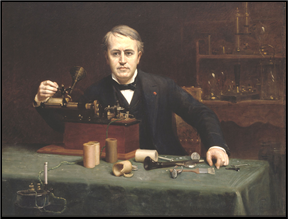 xxxxxThe American scientist and entrepreneur Thomas Alva
Edison was a remarkable man in more ways than one. Written off as
a muddle-
xxxxxThe American scientist and entrepreneur Thomas Alva
Edison was a remarkable man in more ways than one. Written off as
a muddle-
xxxxxEdison was
born in Milan, Ohio, but his family moved to Port Huron, Michigan,
when he was seven. By that time he was quite deaf, caused by a
bout of scarlet fever, and this was probably the reason why he was
considered “addled” (confused) at school and virtually un-
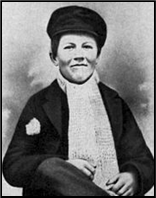 xxxxxHe began work at the age of twelve, working as a
“trainboy” on the Grand Trunk Railway -
xxxxxHe began work at the age of twelve, working as a
“trainboy” on the Grand Trunk Railway -
xxxxxOver the next
seven years he worked as a roving telegrapher in the Mid-
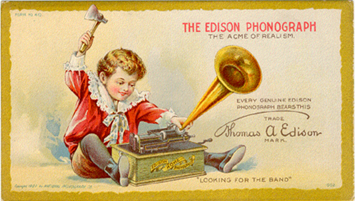 xxxxxThe eleven years spent at Menlo Park were highly
productive and produced some outstanding innovations. In 1877,
for example, he opened up the age of sound recording and
reproduction by inventing the phonograph, a device by which a
needle indented the vibrations made by varying levels of sound
onto a revolving cylinder (later a disc) which was coated with tin
foil. A second needle played back these sound variations, thereby
reproducing the human voice and musical notes. It is perhaps
fitting that when Edison first spoke into the mouthpiece to try
out this sensational piece of equipment he should recite the very
simplest of words -
xxxxxThe eleven years spent at Menlo Park were highly
productive and produced some outstanding innovations. In 1877,
for example, he opened up the age of sound recording and
reproduction by inventing the phonograph, a device by which a
needle indented the vibrations made by varying levels of sound
onto a revolving cylinder (later a disc) which was coated with tin
foil. A second needle played back these sound variations, thereby
reproducing the human voice and musical notes. It is perhaps
fitting that when Edison first spoke into the mouthpiece to try
out this sensational piece of equipment he should recite the very
simplest of words -
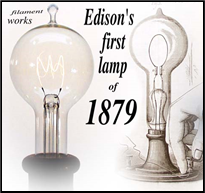 xxxxxIt was in 1878 that Edison and his team turned their
attention to the improvement of the light bulb. A number of
scientists in the past, including the English scientists Humphry
Davy and James Prescott Joule, had tried to produce a modified
electrical light system which could be of practical use in the
home, but none had found a workable solution. The need was to
produce a filament which, when charged, would give sufficient
light by its glow but would not burn out quickly in the process.
Creating a vacuum within the bulb -
xxxxxIt was in 1878 that Edison and his team turned their
attention to the improvement of the light bulb. A number of
scientists in the past, including the English scientists Humphry
Davy and James Prescott Joule, had tried to produce a modified
electrical light system which could be of practical use in the
home, but none had found a workable solution. The need was to
produce a filament which, when charged, would give sufficient
light by its glow but would not burn out quickly in the process.
Creating a vacuum within the bulb -
xxxxxNearly two years were spent on finding the best material to meet the need, during which time thousands of different substances were put on trial, including plant fibres, horse hair, straw, flax, boxwood, hickory and cedar wood. “I ransacked the world,” he later recalled, “to find the most suitable filament material.” Towards the end of 1879 he found it. By using a filament made of carbonised cotton thread he provided a source of light which lasted for up to 45 hours. He gave a public demonstration of his invention in December by lighting up his Menlo Park complex. Some 3,000 people attended, and a New York newspaper called it “the Great Inventor’s Triumph”.
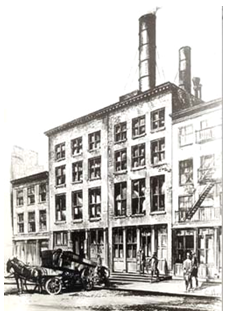 xxxxxBut for the “Wizard of Menlo Park”, as he had come to
be known, this was a triumph in part only, even though he had
increased the life of the bulb to 1500 hours by the end of 1880.
For some years oil and natural gas had been the source of light
and, despite the fire risk both of these posed, a fairly efficient
supply system was well in place in the major cities. Edison had
now to provide the infrastructure required to provide a ready and
dependable supply of electricity to the office, factory and home.
This was no mean task, but he had given much thought to the
creation of an electrical industry during his research for a
workable bulb. Thus by September 1882 he had installed the
country’s first central electric power station on Pearl Street,
New York, with steam driven generators (dynamos) capable of
providing sufficient power for over 7,000 lamps within an area of
one square mile. Distribution followed with the laying of cables
and the installation of switches and meters. The age of
electricity was under way. By the late 1880s the Edison Light
Company had been formed, and small power stations were in
operation in many cities across the United States. By 1901 the
country had 3,500 different generating systems at work, and the
various undertakings had been merged into the General Electric
Company, one of the largest industrial enterprises in the United
States. By this time, however, -
xxxxxBut for the “Wizard of Menlo Park”, as he had come to
be known, this was a triumph in part only, even though he had
increased the life of the bulb to 1500 hours by the end of 1880.
For some years oil and natural gas had been the source of light
and, despite the fire risk both of these posed, a fairly efficient
supply system was well in place in the major cities. Edison had
now to provide the infrastructure required to provide a ready and
dependable supply of electricity to the office, factory and home.
This was no mean task, but he had given much thought to the
creation of an electrical industry during his research for a
workable bulb. Thus by September 1882 he had installed the
country’s first central electric power station on Pearl Street,
New York, with steam driven generators (dynamos) capable of
providing sufficient power for over 7,000 lamps within an area of
one square mile. Distribution followed with the laying of cables
and the installation of switches and meters. The age of
electricity was under way. By the late 1880s the Edison Light
Company had been formed, and small power stations were in
operation in many cities across the United States. By 1901 the
country had 3,500 different generating systems at work, and the
various undertakings had been merged into the General Electric
Company, one of the largest industrial enterprises in the United
States. By this time, however, - n
Nikola Tesla, an electrical engineer employed by the American
entrepreneur George Westinghouse. Nonetheless, the spread of the
electricity industry across the world, brought Edison to new and
dizzy heights of fame and fortune.
n
Nikola Tesla, an electrical engineer employed by the American
entrepreneur George Westinghouse. Nonetheless, the spread of the
electricity industry across the world, brought Edison to new and
dizzy heights of fame and fortune.
xxxxxAs we have seen, among Edison’s other inventions was the carbon microphone, acquired by the Bell Company in 1879. This greatly improved the quality of Graham Bell’s telephone, increasing its volume and giving it a much wider range. Over the years he also invented an alkaline storage battery, an electric pen, and an electric vote recorder, an idea which aroused little interest at the time. And there were more inventions to come. In 1887 Edison moved to West Orange, New Jersey, and built an even larger laboratory for experimentation and research purposes. And it was here, as we shall see (1891 Vc), that together with the likes of the Lumière Brothers and others, he became one of the foremost pioneers in the development of silent and talking movies.
xxxxxIncidentally, among the famous who recorded their voices on the Edison phonograph was the English composer Arthur Sullivan. After congratulating Edison on his invention, he said he was terrified at the thought that so much “hideous” music could be placed on record forever! ……
xxxxx…… In the 1920s the American industrialist Henry Ford, a
great admirer of Edison, reconstructed the Menlo Park complex of
laboratories -
xxxxx…… The steam generating
power station built at Pearl Street, in Lower Manhattan, New York,
in 1882 was not the first of its kind. In January of that year
Edison had supervised the installation of such a plant at Holborn
Viaduct in London. However, a limited amount of electric street
arc-
xxxxx…… Edison’s phonograph was
substantially improved in the mid-
xxxxx…… It was Edison who coined the phrase that genius was
“one percent inspiration and ninety-
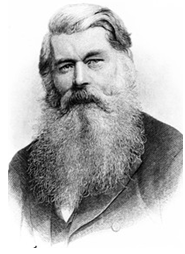 xxxxxThe English inventor Joseph
Wilson Swan (1828-
xxxxxThe English inventor Joseph
Wilson Swan (1828-
Including:
Joseph Wilson Swan and
George Westinghouse

Vb-
xxxxxThe American
inventor Thomas Alva Edison became a telegrapher in 1862, and from
then on made a number of far reaching improvements to the
telegraphy system, then in its infancy. In the early 1870s, as we
have seen, he invented the carbon microphone -
xxxxxEdison’s bid
to develop America’s network based on DC (direct current) was
challenged in the 1880s by the American inventor and industrialist
George Westinghouse
(1846-
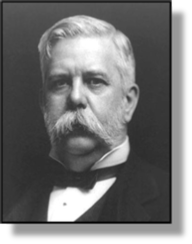 xxxxxBut in his bid
to develop America’s electricity network based on DC (direct
current), begun as we have seen with the setting up of a power
station in New York in 1881, Edison came up against a formidable opponent, the
American inventor and industrialist George
Westinghouse (1846-
xxxxxBut in his bid
to develop America’s electricity network based on DC (direct
current), begun as we have seen with the setting up of a power
station in New York in 1881, Edison came up against a formidable opponent, the
American inventor and industrialist George
Westinghouse (1846-
xxxxxSoxbegan the “War of the Currents”, with Edison claiming that alternating current was highly dangerous, and Westinghouse arguing that the advantages far outstripped the risks. Edison attempted to obtain a legal restriction of 800 volts on transmitted power but he failed. The major disadvantage of DC was that it was only effective within a two mile radius of the generating station, and this proved the decisive point. AC was more efficient and had a vastly extended range. As a result, in 1892 General Electric took over Edison’s company and began the production of AC equipment. Then in 1893 Westinghouse won the contract to harness Niagara Falls for the generation of electricity. The success of this scheme, in operation three years later, proved the turning point in the acceptance of alternating current. Westinghouse had won the day. (See diagram below).
xxxxxDuring his
career Westinghouse applied for more than 400 patents. Apart from
the electricity industry, these concerned the development of the
railroads and the improvement of the gas industry. He is best
remembered today for his railroad braking system using compressed
air -
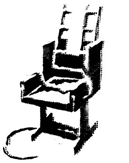
xxxxxIncidentally, as part of his campaign during the “War of the
Currents”, Edison had animals publicly electrocuted to demonstrate
the strength and inherent danger of alternating current. And when
this system was used to power the electric chair -
xxxxx…… Nikola Tesla worked hard for Edison over several years, but he left in 1885 when Edison broke his word over the promise of a substantial payment. Tesla was told that he would be paid $50,000 dollars if he successfully made improvements to the DC generating plants, but, having done so, Edison said that it had been an “American joke” and refused even to increase his salary. Tesla resigned and for a time earned a living digging ditches. In 1888, however, he began working for Westinghouse, providing him with the means by which he could develop a network based on alternating current. Edison later confessed that he had treated Tesla unfairly.



